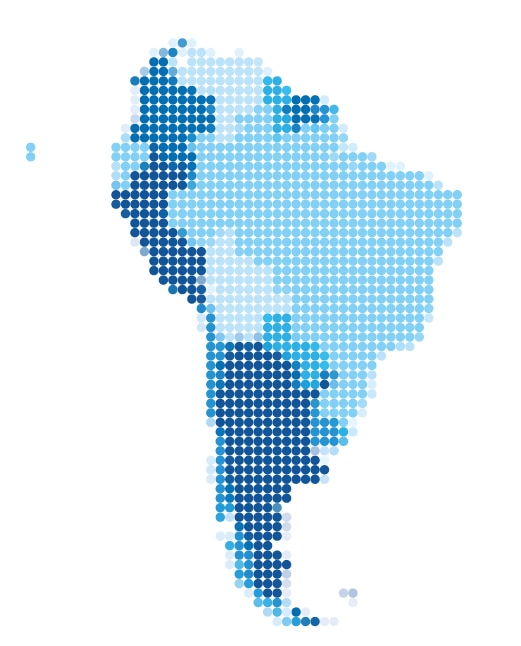Central banks in Latin America at a crossroads
Central banks in Latin America are finding it particularly difficult to meet their target of low and stable inflation, since many countries are facing at the same time problems of high inflation (fueled by the depreciation of the exchange rate) and low economic growth.

The multiple responsibilities of Latin American central banks include supplying local currency, overseeing the operation of bank clearing and handling international reserves, but their main function is to maintain price stability and preserve financial stability.
The great problem they have is that on most occasions they need to adopt totally contradictory policies: if they establish measures to meet their priority of curbing inflation, they can slow down economic growth —especially if the economy is already going through an unfavorable cyclical phase— and bring inflation below their target, or even fall into deflation.
The effects of El Niño and dolar appreciation on prices
Indeed, South American countries face problems of high inflation that can aggravate this year due to the effects of the El Niño phenomenon on food prices or the devaluation of the currencies against the U.S. dollar, that makes imported products more expenses. This would necessarily force the central banks to take steps to curb demand through an increase in interest rates.
But we should also take into account that in addition to closing 2015 with high inflation (see box at the end), these countries also underwent an economic slowdown last year, with GDP growth that will be much lower than the potential in these countries, which in itself should already act as a drag on inflation. This would suggest the need to encourage greater economic activity this year to avoid a major burden on inflation in the future. The problem is that when interest rates are hiked, companies hold back their investment projects awaiting for more favorable conditions and consumers slow down their spending, slowing down the economy.
Another clear example of the dilemma faced by the central banks could come from the exchange rate side. To encourage exports and economic growth that way, the ideal would be to have a greater depreciation of the local currency, which becomes more necessary at times like these, when the prices of commodities are declining significantly. However, a high devaluation can be transferred to the prices of the goods produced in the country that have some imported component, as more pesos will have to paid for each dollar, as well as to the general products bought abroad, which would necessarily bring more inflation.
A recent study by BBVA Research points out that the rise in inflation and the worsening expectations led the Central Banks of the Andean countries to increase interest rates in the closing months of 2015 despite the strong slowdown of economic activity, and estimates that as long as inflation persists, additional hikes can be expected in the coming months. It also forecasts that the currencies will remain depreciated due to the increase in rates implemented by the Federal Reserve and a less favorable external environment.
So, what will the Central Banks do this year? Where will they tip the balance? Will they continue to increase interest rates? Will they curb the devaluation? We will soon find out.
Inflation grows in South American copuntries in 2015

South American countries closed 2015 with high levels of inflation.
Brazil, the largest economy in the region, registered an annual price increase of 10.67%, the highest level in 12 years;
Colombia, 6.77%, the highest in seven years;
Uruguay, 9.44%, the highest level in a decade;
Chile and Peru, 4.4%;
Paraguay, 3.1%;
Argentina would be above 25%, although official figures have not yet been released.